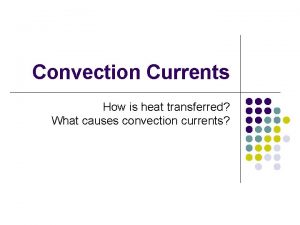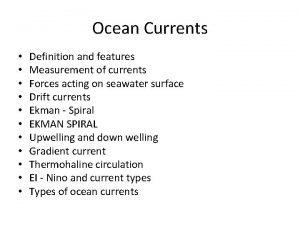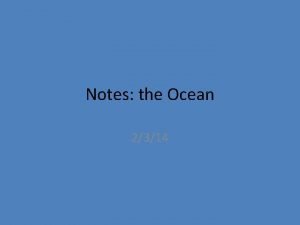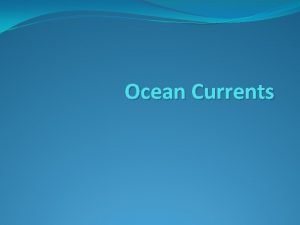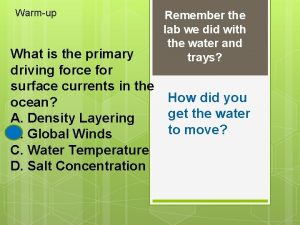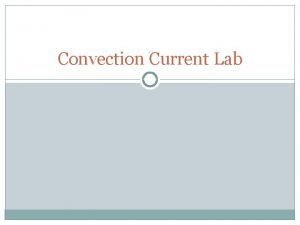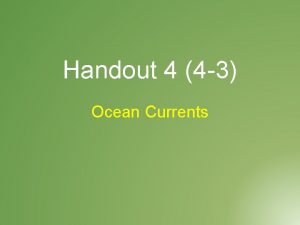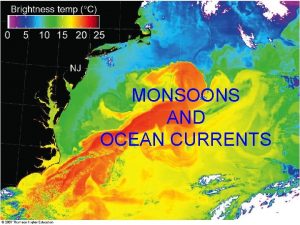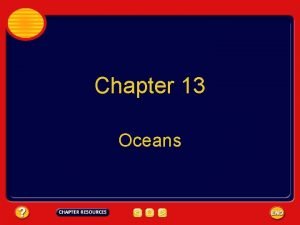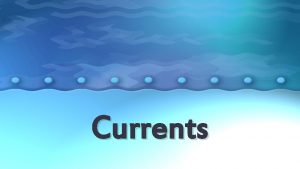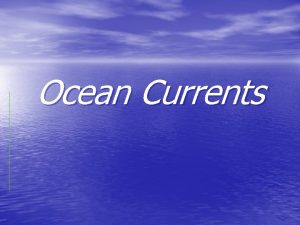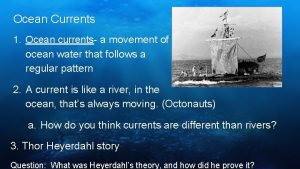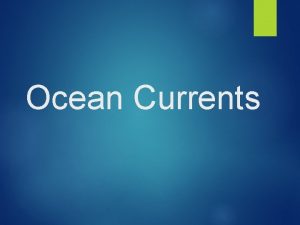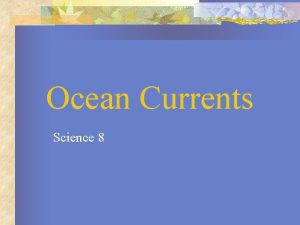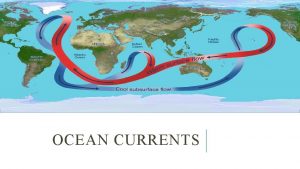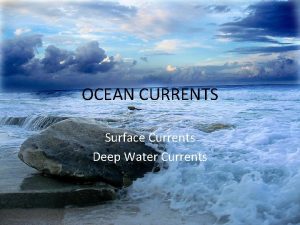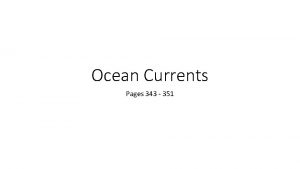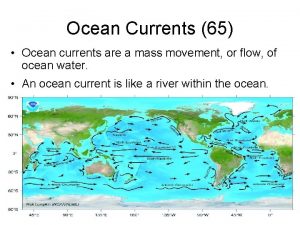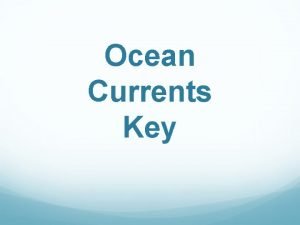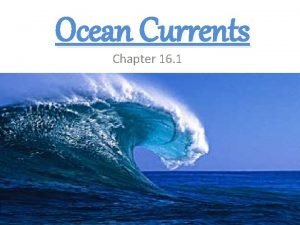Currents Ocean Currents Ocean currents are a movement















- Slides: 15

Currents

Ocean Currents Ocean currents are a movement of ocean water that follows a regular pattern. There are two types of currents: surface currents and deep (density) currents.

Ocean Currents: Surface Currents �Surface currents move water horizontally – parallel to Earth’s surface �Surface currents are powered by wind �The wind forces the ocean to move in huge, circular patterns http: //www. livescience. com/19662 animation-reveals-ocean-currents. html

Three Factors that affect Surface Currents 1. Global Winds � Winds blow across the Earth’s surface � Winds blow water east to west at the equator � Winds blow water west to east closer to the poles

2. Coriolis Effect �The curving path of a moving object from an otherwise straight path due to Earth’s position �http: //www. youtube. com/watch? v= dt_XJp 77 -mk �Southern Hemisphere – currents turn counter-clockwise �Northern Hemisphere – currents turn clockwise �http: //www. classzone. com/books/e arth_science/terc/content/visualizati ons/es 1904 page 01. cfm

3. Continental Deflection �When surface currents meet continents, the currents deflect, or change direction

Ocean Currents: Surface Currents

Temperature Affects Surface Currents �Warm-water currents begin near the equator and carry warm water to the other parts of the ocean �Cold-water currents begin closer to the poles and carry cool water to other parts of the ocean.

Surface Currents Notice again the Red arrows and the Blue arrows showing the movement of warm water and the movement of cold water

Deep (density) Currents �Deep currents are a stream like movement of ocean water far below the surface. �Deep in the ocean, waters circulate not because of wind but because of density differences. �A density current forms when a mass of seawater becomes more dense (density increases) than the surrounding water. �More dense seawater sinks beneath less dense seawater. �Density currents circulate ocean water slowly.

Ocean depth increases Density increases Temperature decreases Density decreases Salinity increases Density increases Temperature decreases because cold water is more dense and sinks

Density Currents

• Surface currents carry warm water to polar regions. • Warm water replaces cold water that sinks to the ocean floor. • Deep currents carry cold water along the ocean floor from polar regions. • Water from deep currents rises to replace water leaving surface currents.


Waves & Currents Video http: //studyjams. scholastic. com/stu dyjams/science/weather-andclimate/waves-and-currents. htm
 Insidan region jh
Insidan region jh Compared with surface currents deep currents are
Compared with surface currents deep currents are Factors affecting climate
Factors affecting climate What causes of convection currents
What causes of convection currents Surface current definition
Surface current definition What are ocean currents
What are ocean currents Ocean currents vocabulary
Ocean currents vocabulary Ocean currents
Ocean currents What is the primary driving force behind surface currents?
What is the primary driving force behind surface currents? Convection currents in the ocean
Convection currents in the ocean Surface ocean currents
Surface ocean currents Ocean currents
Ocean currents Cold peruvian current
Cold peruvian current Citlalli dominguez
Citlalli dominguez Rubber ducks ocean currents activity
Rubber ducks ocean currents activity Why are tropical climates so hot brainpop
Why are tropical climates so hot brainpop



